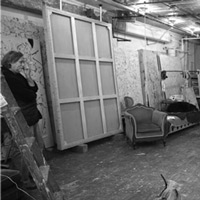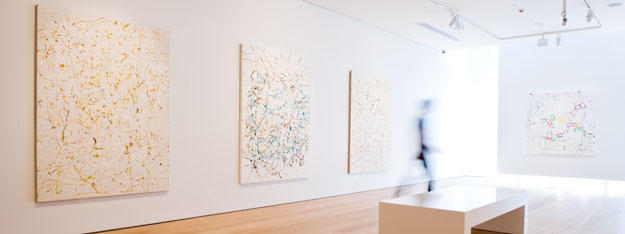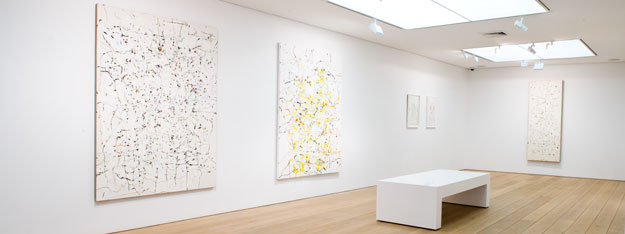“A painting is a series of marks that join together to form an object or work over which one’s eye may freely roam.” -°©‐Pierre Bonnard
Jan Frank (b. Amsterdam, Holland) is a contemporary American painter that lives and works in New York City. He studied at the Univerity of Wisconsin and participated in the Whitney Independent Program in New York. Frank shared a studio with the painter Chuck Close and over the years has fostered relationships with artists such as Norman Bluhm, William da Kooning, Alberto Burri, Donald Judd, Carl Andre, and Phillip Guston.
Throughout his career, Frank’s work has reflected an investigation and appropriation of the line most commonly associated with the traditions of Abstract Expressionism. His drawings and paintings recall the organic, winding lines used by Willem de Kooning in his representation of fragmented figures, while congruently addressing the early influence of Piet Mondrian by expressing the value of positive and negative space. Acknowledging the fundamental presence of art history in Frank’s practice, art historian B.H. Friedman expounded that, “Whatever his influences…Frank is clearly an independent and original artist who celebrates important contemporary traditions leading to his unique images.”
The work’s sparseness is informed by minimalism, while it’s expressive streaks conjure references to cartooning and create jungles of intertwining brush strokes. There is no intentional imagery, only mark making. Expression is at the heart of Frank’s artistic ideology.
Frank’s work uncovers the paradox of how one might consider unleashing a harmonious unfolding of energies. Allowing for mishaps, he embraces their spontaneity, and thus capitalizes on the freedom he allows his hand. Through this process, Frank uniquely creates an underlying orchestrated chaos, which infuses his overall vision with character and vitality. These attributes provide the viewer with work that is tremulous, workmanlike and feverishly energetic, yet playful and deliriously fanciful.


